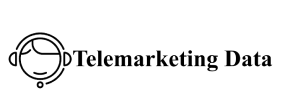In the email, we might say that many businesses struggle with keeping their email lists clean while maintaining high conversion rates. We can then link to our article on effective email list cleanup techniques .
2. Focus on one thing at a time
Emails should not be too long. Remember, time is money.
Focus on one point in your email. Think chile whatsapp number data 5 million of it as a subject or goal. What do you want your readers to get out of your email?
3. Connect with your readers on a personal level
Imagine you’re writing an email to a friend. Imagine a single person, and then focus on them . Use casual language (if it fits your brand) and write in the second person (use the word “you”).
4. Don’t over-promise
It’s easy to get carried away when writing use trust badges to let your customers know your store is safe an email. You want to make a commitment to the world.
Resist the urge.
Instead, only promise things you can achieve.
5. Avoid clichés when writing email copy
Clichés are insidious creatures that can creep into your emails and damage your brand. You may think you’re following traditional sales tactics, but you’re actually destroying relationships.
For example, using false reasons can b2b reviews hurt you. Making excuses like “ our servers crashed” or “ we had a problem with our email delivery service , ” will make you look like an amateur.
The same goes for feigning a sense of urgency.
If you continually “extend the deadline” on a sale or promotion, your readers will notice.
The same goes for marking an email as “private”. Unless you’re only emailing one person, it’s not private. So don’t say it is.
You may also like:
- How to Build an Email List from Scratch: A Start-to-End Guide
- Email List Cleaning: Clean Your List Without Losing Conversions
Frequently asked questions
Q1. What are the 4C principles of copywriting?
The 4Cs are:
- Clarity: Use simple language and short sentences to grab attention.
- Be concise: Get your message across quickly, especially in social media posts and sales copy.
- Compelling: Make your copy interesting and persuasive by addressing your audience’s pain points.
- Credible: Use accurate information, testimonials, and statistics to build trust.

